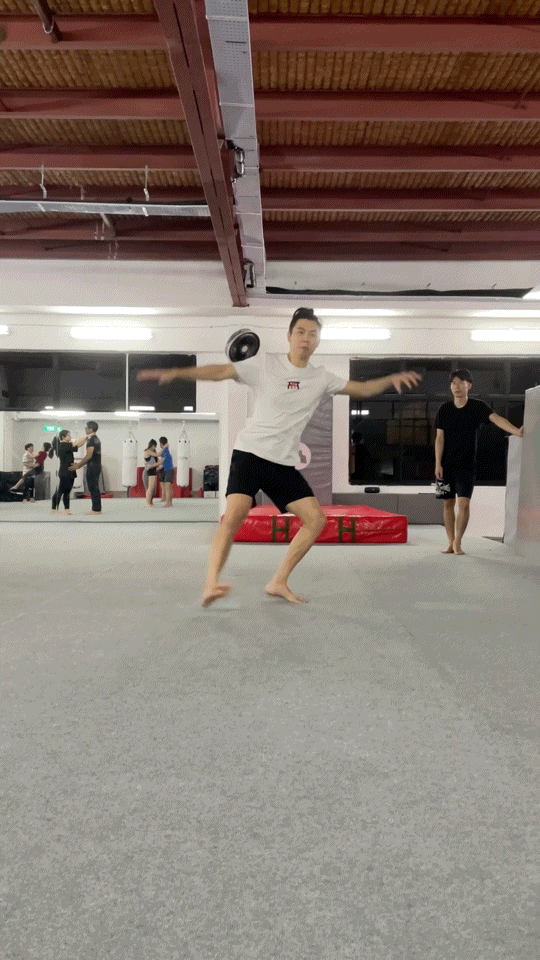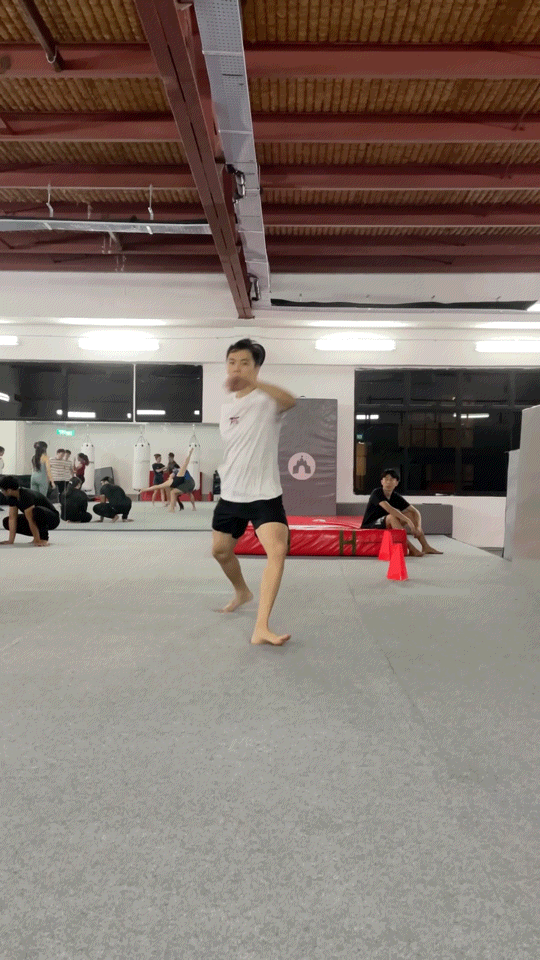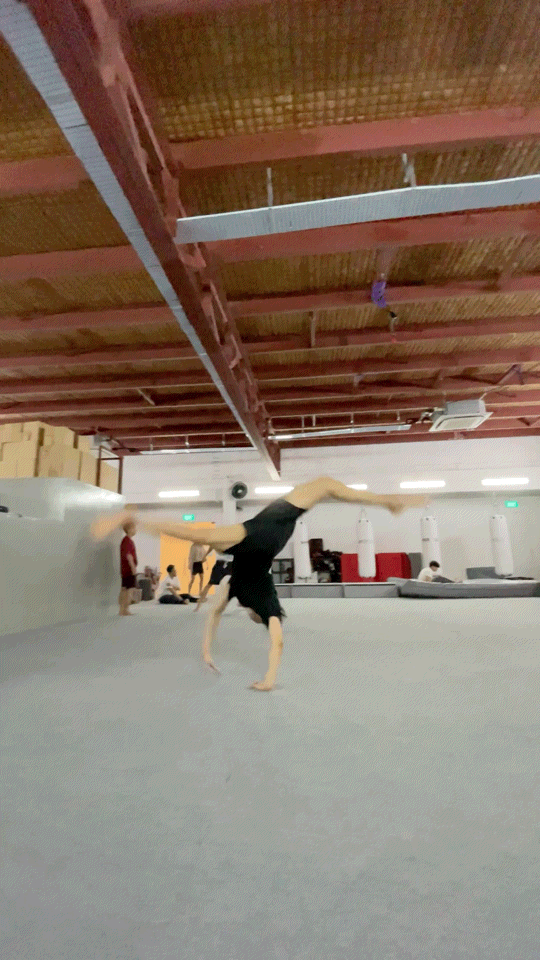A common theme behind wildly successful video games is the progression scheme that they implement to keep players hooked. Amongst various reasons why people play video games, they are able to live the lives of different identities in worlds that allow them to escape from the present- they are able to get dopamine (the awesome feeling you have when you accomplish certain challenges) in their virtual worlds.
Tricking offers something similar, from an improvement in your confidence and self-esteem to becoming stronger and more agile as you pick up increasingly advanced movement patterns. In a sense, you can "LEVEL UP" in real life, through tricking.
Instead of playing Spiderman, and dodging attacks through tricks like Webster and Touchdown Raiz... why not become spider(wo)man?

Table Of Contents:
how will you progress with tht
Over the past few months, we've developed a road map to make it easier for people to pick up tricking. This roadmap is made up of 5 different levels, with milestones (tricks to master) separating each level.
The tricks within our syllabus are used in a myriad of disciplines, such as to enable Taekwondo athletes to ace Freestyle Poomsae as well as Dancers to wow their judges. It's not surprising that the top few in each genre are very well equipped with Tricking.
Before we dive deeper into the roadmap, there are 2 different concept that underpins the structure of how we conduct our classes to enhance progressions for students with different athletic capabilities as well as ensure safety for every individual:
Alpha & Beta Risk
Power of Tiny Gains
the mental framework we use to prevent you from getting injured
In statistics, there is something called Alpha and Beta Risk. These are mental frameworks that are used to measure the correctness of a decision. There are different consequences to different incorrect decisions, and hence we have to strategise our framework according to the risks involved.
Participant's opinions/Reality | Event is true, in reality | Event is false, in reality |
I think event is true | True Positive: What I think is true is true | Beta Risk: What I think is true is false |
I think event is false | Alpha Risk: What I think is false is true | True Negative: What I think is false is false |
For example, do we allow all students to attempt a backflip in the first lesson? What should be in the thoughts of a coach when faced with a request to try a backflip?
Coach's thoughts/ Reality | Student can backflip in reality | Student cannot backflip in reality |
I think student can backflip | Student can backflip | Beta Risk: I think student can backflip but actually the student cannot |
I think student cannot backflip | Alpha Risk: I think student cannot backflip but actually the student can | Student cannot backflip |
What's important is the consequence of ignoring alpha and beta risk.
If one chooses to not hedge Alpha Risk, the student is safe so there's no negative outcomes.
However, if one ignores Beta Risk, the student is exposed to the risk of injury, such as landing on the neck and many other potential injuries.
Hence, it's prudent for the coach to err on the side of acknowledging Beta Risk, especially when it comes to the risk of long-term injuries.
However, how can we design a structure that acknowledges Beta risk but at the same time allow students to progress in tricking?
Enter the Aggregation of Marginal Gains Theory.
The power of tiny gains: aggregation of Marginal Gains Theory
Aggregation of marginal gains theory is a belief that if you make 1% improvement in several different areas on a frequent basis, the cumulative benefit would be extraordinary.
This theory/belief was used by Sir Dave Brailsford to convert "mediocre" British professional cyclist into Olympic gold medalist.
In his words:"The whole principle came from the idea that if you broke down everything you could think of that goes into riding a bike, and then improved it by 1%, you will get a significant increase when you put them all together"
However, improving by 1 percent isn't particularly visible- in the short run. For example, 1% improvement over 10 days yields 1.01^10≈ 1.1.

The power of tiny gains lies after the compounding effects of time.
How is this applied in your journey in THT?
We can take for example the process of teaching you a backflip. You are recommended to go for [LVL 1] Backflip, where we'll teach you the basics of backflip which you can learn in 1 day. For example, how to keep your core tight when swinging your arms to generate a good jump, and how to use your core to do a backroll ( hint: there are 2 actions to be done).
Then we'll invite you for [LVL 2] Backflip, where you'll be exposed to the Backflip Block Drills. The backflip block drills simulate what a backflip is like. From here on, we focus on improving the block drill bit by bit, for example, to improve your trunk flexion when you tuck among many other cues. To go from [LVL 2] to [LVL 3], you'll have to complete at least 100 repetitions of the Backflip Block Drills to ensure that you have "downloaded" the correct sequence of muscle memory from us.
We'll start attempting backflips from [LVL 3] onwards, where the goal is to execute 100 backflips to ensure that the muscle memory has been sealed in place.
[LVL 4] Backflip would be adding variations into a backflip such as layout backflip and flash kick, as well as adding setups to enter a backflip- for example, Handstand/Scoot/Round off backflip.
[LVL 5] Backflip would be about adding twists to the backflip , such as backflip layout half twist and backflip full twist. Our syllabus ends at Double twists for now.
| Student can backflip, in reality | Student cannot backflip, in reality |
Coach thinks that student can backflip | Student does a backflip with ease as one has the necessary strength and coordination to execute it safely. | If a student cannot backflip because one does not have the necessary strength and coordination to execute it safely and you still make the student try, you are unfit to be a coach. |
Coach thinks student cannot backflip | Student might be able to backflip, but let's wait until the student has more than sufficient strength and coordination. | Student needs to improve strength and coordination. |
On average, it takes students 4 lessons of [LVL 2] backflip to get 100 repetitions in or to have the necessary strength and coordination to attempt a backflip with the coaches' assistance.
Through adding small cues and progressions, we guide you toward having sufficient strength and technique to execute a backflip safely.
THT roadmap
There will be a visual representation of the roadmap coming up soon, so these will be the written format of what it is.
The contents taught in [LVL 1] are things that are simple enough to be learnt in a day. As long as you can walk, jump and run, you will not find these particularly challenging.
[LVL 2] Backflip and Frontflip involve fulfilling 100 repetitions of the Backflip and Frontflip Block drill. Although the number "100" is a milestone, our coaches can tell when you are ready to attempt the flip because of the body position you will be in due to correct movement patterns.
LVL 2 TrickFit: Backflip and Frontflip
The tricks in [LVL 2] Kicks and Inverts require a little less strength and power, although it would be equally or more challenging in coordination. We go through the steps to learn a 540 kick, as well as Macaco and Aerial. At the end of the lessons, it should feel like you've your leg and shoulder workout done. You WILL level up in flexibility, mobility, and agility when you pick up rather advanced movement patterns from the movement disciplines of Capoeira, Taekwondo, and Wushu.
[LVL 2 ] kicks of fury
[lvl 2] acrobatic inverts
[LVL 3] Backflip and Frontflip involve executing 100 flips each. Making sure that you have the repetitions in ensures that muscle memories that we have imbued in you are cemented and sealed in. Generally, you don't want to learn new stuff at the expense of forgetting what you've learned prior, else it might just be unproductive.
[LVL 3] Kicks & Invert involves adding twists to your kicks, as well as twists to your inverts. Tricks that can be learned is backside 900 (Koreans call it pop turn), Jack Knife (540 kick with 2 distinct kicks) as well as Cheat Gainer and Butterfly Twists, amongst many other tricks that are appropriate at this level.
[LVL 4] Backflip and Frontflip involve, as mentioned before, adding variations to the flip as well as setups into the flip. You can expect to learn Backflip variations like the layout or flash kick, as well as Frontflip variations such as Front Pike, Front Layout as well as Frontflip Half twist. Entries into Backflip include from Handstands, Round offs, Cartwheel and Scoot.
Entries into Backflip include the Webster (a very spiderman move) as well as Cartwheel.
[LVL 4] Kicks involve learning Cheat 900 (Koreans call it 720 turning), and Cartwheel full variations such as round, double leg, and swipe. [LVL 4] Inverts involve learning the Corkscrew, Raiz as well as Touch Down Raiz ( another very spiderman-ish move)
[LVL 5] Flips involve adding twists into flips, such as the Backflip Full Twist and Cartwheel Full twist. It ends with Cartwheel double full twists as well as Round off double full twist.
[LVL 5] Kicks and Inverts shows you the rope through Hyperhook and Boxcutter, as well as swing throughs and Helicoptero.
Do Find the rest of the roadmap here!
Conclusions
I hope this article has been insightful into how we think as a tribe to enable more people to trick like us. Our vision is to "TRICK FOREVER". While it is not feasible yet that we can live forever, we believe the structures we created can stand the test of time.
I implore you to join us in our journey of self-improvement, breaking through fear as well as reaping the benefits of the power of little gains! Feel free to chat with me regarding any questions about the article through the button below!
(P.S, we are looking to work with different Dance, Taekwondo and Wushu clubs to help their students ace competitions in Singapore. Tricking can help!)
Onwards,
Ray










Comments